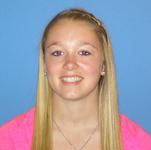Below is a summary of the abstract you submitted. Presenting author(s) is shown in bold.
If any changes need to be made, you can modify the abstract or change the authors.
You can also download a .docx version of this abstract.
If there are any problems, please email Dan at dar78@pitt.edu and he'll take care of them!
This abstract was last modified on May 1, 2015 at 11:04 a.m..

Mycobacteriophages Wilbur and Romney2012 (Cluster A4) were isolated from separate soil samples collected from geographically distinct locations on the campus of Seton Hill University in Greensburg, PA via enrichment culture on Mycobacterium smegmatis mc<sup>2</sup>155 and characterized by students at Seton Hill University participating in the SEA-PHAGES research program. Both phages form clear plaques of 2.5 mm in diameter after 24 h incubation at 37°C. Both genomes are highly similar (51.4 kb, 63.9% GC, defined linear ends, 99% nucleotide similarity) despite being isolated from unique soil samples collected on different days. Phage genomes were annotated using DNA Master, HHPred, Phamerator, and the BLAST database suite. Wilbur and Romney2012 each contain 84 predicted protein-coding genes. Several noncoding features in the Wilbur genome were identified and annotated. Various phage characteristics were explored, including the permissive temperature range for plaque formation, ion co-factor requirements, and lysogen formation. Despite having genetic features common to temperate phages, Wilbur forms clear plaques under laboratory conditions, and no lysogens were able to be isolated using this phage. Future directions include examination of Wilbur and Romney2012 under various conditions to assess lysogeny and broader bioinformatic searches for noncoding features and mapping of membrane spanning domains.

